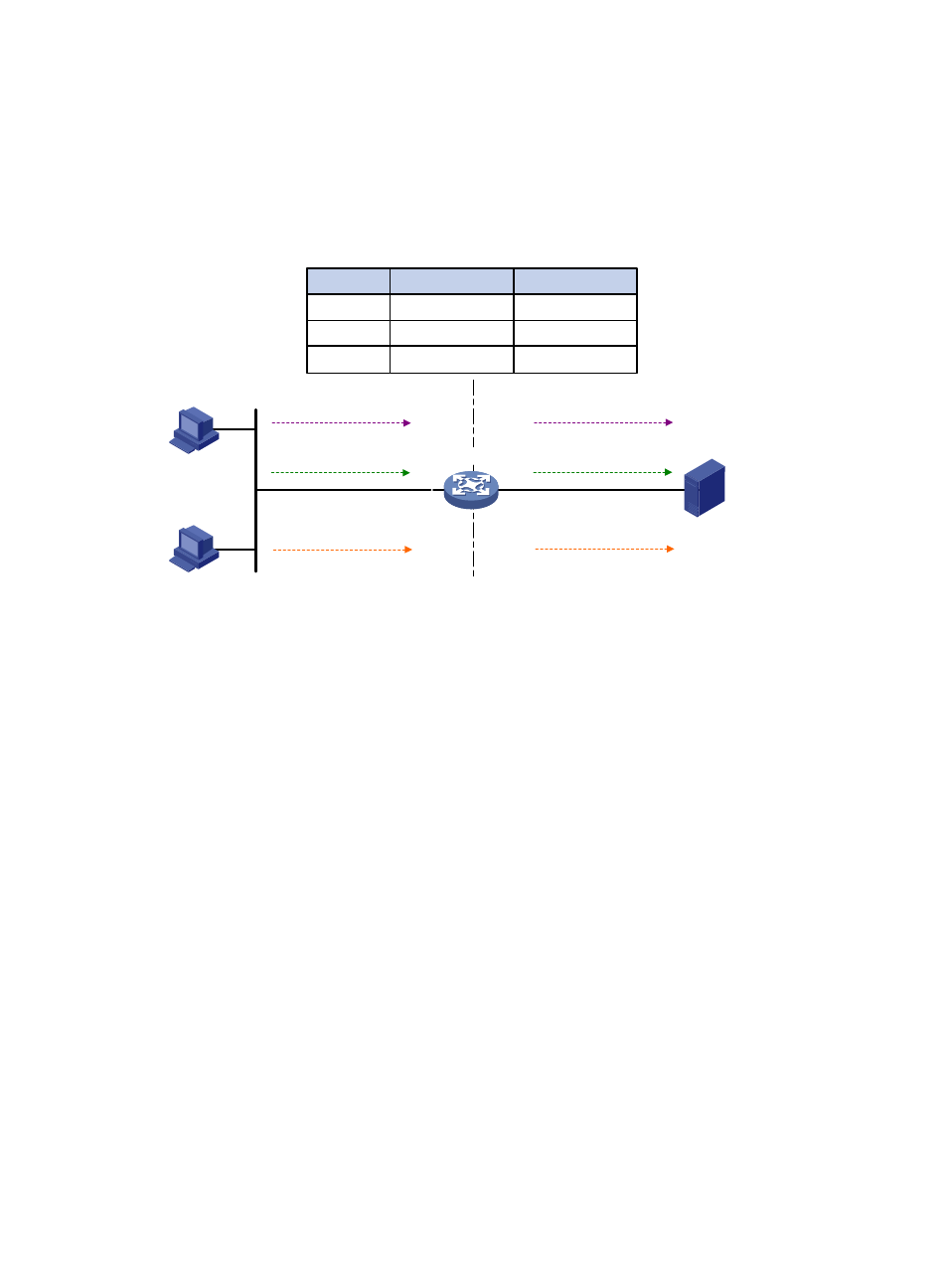Napt, Easy ip, Internal server – H3C Technologies H3C WX3000E Series Wireless Switches User Manual
Page 285

264
NAPT
Network Address Port Translation (NAPT) is a variation of basic NAT. It allows multiple internal addresses
to be mapped to the same public IP address, which is called multiple-to-one NAT.
NAPT mapping is based on both the IP address and the port number. With NAPT, packets from multiple
internal hosts are mapped to the same external IP address with different port numbers.
Figure 237 NAPT operation
As shown in
, three IP packets arrive at the NAT device. Packets 1 and 2 are from the same
internal address but have different source port numbers. Packets 1 and 3 are from different internal
addresses but have the same source port number. NAPT maps their source IP addresses to the same
external address but with different source port numbers. Therefore, the packets can still be discriminated.
When response packets arrive, the NAT device can forward them to corresponding hosts based on the
destination addresses and port numbers.
NAPT can better utilize IP address resources, enabling more internal hosts to access the external network
at the same time.
Easy IP
Easy IP uses the public IP address of an interface on the device as the translated source address to save
IP address resources, and uses ACLs to permit only certain internal IP addresses to be NATed.
Internal server
NAT hides the internal network structure and the identities of internal hosts. However, some internal hosts
such as an internal Web server or FTP server might need to be accessed by external hosts. NAT satisfies
this need by supporting internal servers.
You can configure an internal server on the NAT device by mapping a public IP address and port number
to the private IP address and port number of the internal server. For example, you can configure an
address like 20.1.1.12:8080 as an internal Web server's external address and port number.
In
, when the NAT device receives a packet destined for the public IP address of an internal
server, it looks up the NAT entries and translates the destination address and port number in the packet
to the private IP address and port number of the internal server. When the NAT device receives a
response packet from the internal server, it translates the source private IP address and port number of the
packet into the public IP address and port number of the internal server.
192.168.1.1
20.1.1.1
1.1.1.2
Server
NAT
Intranet
Internet
192.168.1.2
Host A
192.168.1.3
Host B
Packet 1
Src : 192.168.1.2:1111
Packet 2
Src : 192.168.1.2:2222
Packet 3
Src : 192.168.1.3:1111
Packet 1
Src : 20.1.1.1:1001
Packet 2
Src : 20.1.1.1:1002
Packet 3
Src : 20.1.1.1:1003
Before NAT
192.168.1.2:1111
After NAT
20.1.1.1:1001
Direction
Outbound
192.168.1.2:2222
20.1.1.1:1002
Outbound
192.168.1.3:1111
20.1.1.1:1003
Outbound